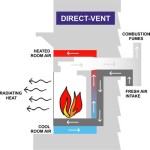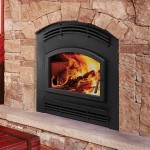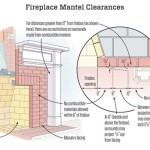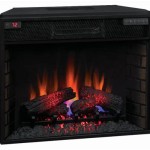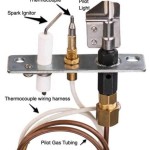Small Wood Burner Fireplaces: A Practical Heating and Aesthetic Solution
Small wood burner fireplaces represent a compact and efficient heating solution for smaller homes, cabins, and even individual rooms. These fireplaces offer the ambiance and warmth of a traditional wood fire without requiring the extensive space and fuel consumption of larger models. The suitability of a small wood burner depends heavily on factors such as the intended heating area, insulation characteristics of the space, and the user's commitment to fuel management.
The market for small wood burner fireplaces has expanded considerably in recent years, driven by increasing energy costs and a renewed interest in sustainable heating options. Modern small wood burners incorporate advanced combustion technologies to maximize efficiency and minimize emissions, making them a viable alternative to traditional gas or electric heating systems. Furthermore, the aesthetic appeal of a crackling wood fire continues to be a strong draw for homeowners seeking a cozy and inviting atmosphere.
Defining "Small" in Wood Burner Fireplaces
The term "small" when applied to wood burner fireplaces is relative and subjective. However, a general understanding can be established by considering the firebox size, heat output, and overall dimensions. Typically, a small wood burner will have a firebox capacity of less than 1.5 cubic feet. This limits the size of the logs that can be accommodated, influencing the burn time and the frequency of refueling. Heat output, measured in BTUs (British Thermal Units), is another crucial factor. Small wood burners generally produce between 20,000 and 50,000 BTUs per hour, sufficient to heat a space ranging from 400 to 1,200 square feet, depending on insulation and climate conditions.
From a dimensional perspective, small wood burners are designed to minimize their footprint. This is particularly important for installation in tight spaces, such as small cabins, apartments, or individual rooms. Typical dimensions might range from 20 to 30 inches in width, 20 to 30 inches in depth, and 24 to 36 inches in height. However, these dimensions can vary depending on the specific design and features of the fireplace.
Benefits of Choosing a Small Wood Burner Fireplace
Selecting a small wood burner fireplace offers several distinct advantages. Primarily, the reduced size and heat output make them ideal for heating smaller spaces effectively and efficiently. Overheating can be a significant issue with larger fireplaces in well-insulated homes, but a smaller unit can provide comfortable warmth without creating an excessively hot environment.
Cost-effectiveness is another key benefit. Small wood burners typically require less wood to operate compared to larger models, resulting in lower fuel costs over the long term. Furthermore, the initial purchase price of a smaller unit is generally lower, making it a more accessible option for homeowners on a budget.
Installation flexibility is also enhanced with small wood burners. Their compact size allows for easier integration into a wider range of spaces, including those with limited floor space or pre-existing fireplace openings. This adaptability makes them a popular choice for retrofitting existing homes or adding a supplemental heating source to specific rooms.
Beyond practicality, the aesthetic appeal of a small wood burner should not be overlooked. These fireplaces can serve as a focal point in a room, adding character and warmth to the décor. The visual impact of a flickering flame and the aroma of burning wood contribute to a cozy and inviting atmosphere, enhancing the overall ambiance of the space.
Factors to Consider When Selecting a Small Wood Burner
The selection of a small wood burner fireplace should be a carefully considered process, taking into account various factors to ensure optimal performance and safety. Heat output is a primary consideration, requiring an accurate assessment of the space to be heated and the prevailing climate conditions. Overestimating the heat output can lead to discomfort and wasted energy, while underestimating it may result in inadequate heating.
Efficiency and emissions are also crucial factors. Modern wood burners are designed to meet stringent EPA (Environmental Protection Agency) standards for emissions, minimizing their environmental impact. Look for models that are certified as clean-burning and utilize advanced combustion technologies, such as secondary air injection or catalytic converters, to maximize efficiency and reduce pollutants.
The type of wood fuel that will be used is another important consideration. Different types of wood have varying heat outputs and burning characteristics. Hardwoods, such as oak and maple, generally provide longer burn times and higher heat output compared to softwoods like pine. It is essential to select a wood burner that is compatible with the available fuel source and to ensure that the wood is properly seasoned (dried) to maximize efficiency and minimize creosote buildup in the chimney.
Safety features are paramount when selecting a wood burner. Look for models that incorporate features such as a tightly sealed door, a spark arrestor screen, and a durable firebox construction. Proper installation and maintenance are also critical for ensuring safe operation. The fireplace should be installed by a qualified professional, and the chimney should be inspected and cleaned regularly to prevent creosote buildup, which can lead to chimney fires.
Finally, consider the aesthetic design and overall style of the wood burner. A wide range of styles are available, from traditional cast iron models to contemporary steel designs. Choose a fireplace that complements the existing décor of the room and reflects your personal preferences.
Installation Considerations for Small Wood Burners
Proper installation is essential for the safe and efficient operation of a small wood burner fireplace. It is highly recommended to hire a qualified professional to handle the installation process, ensuring that all building codes and safety regulations are met. The installation typically involves several key steps.
First, the location of the fireplace must be carefully selected, considering factors such as proximity to combustible materials, access to a chimney or flue, and adequate ventilation. Minimum clearances from walls, ceilings, and other objects must be maintained to prevent overheating and fire hazards. These clearances are typically specified by the manufacturer and should be strictly adhered to.
Next, the chimney or flue system must be properly installed or adapted to the new fireplace. If a pre-existing chimney is used, it should be inspected and cleaned to ensure that it is in good condition and free from obstructions. The chimney should be sized appropriately for the fireplace to ensure adequate draft and prevent backdrafting. In some cases, a new chimney or flue may need to be installed, which can be a significant undertaking.
The fireplace itself should be securely mounted on a non-combustible hearth or pad. The hearth should extend beyond the front and sides of the fireplace to protect the flooring from sparks and embers. The fireplace should be leveled and properly connected to the chimney or flue system, ensuring a tight seal to prevent smoke leakage.
Finally, the installation should be inspected by a building inspector to ensure that it meets all applicable codes and regulations. This inspection is crucial for ensuring the safety and legality of the installation.
Maintenance and Safety Practices
Regular maintenance is essential for the safe and efficient operation of a small wood burner fireplace. This includes tasks such as cleaning the firebox, inspecting the chimney, and removing ash. The firebox should be cleaned regularly to remove ash and creosote buildup, which can reduce efficiency and increase the risk of chimney fires. The frequency of cleaning will depend on the amount of use and the type of wood burned.
The chimney should be inspected at least annually by a qualified professional to check for creosote buildup, cracks, or other damage. Chimney sweeping should be performed as needed to remove creosote and ensure proper draft. Creosote is a highly flammable substance that can accumulate in the chimney and lead to dangerous chimney fires.
Ash should be removed from the firebox regularly and disposed of properly. Allow the ash to cool completely before transferring it to a metal container with a tight-fitting lid. Store the container away from combustible materials until the ash can be safely disposed of.
Safety practices are paramount when operating a wood burner fireplace. Never leave a fire unattended, and always keep a close watch on the fireplace when it is in use. Use a fireplace screen to prevent sparks and embers from escaping the firebox. Keep flammable materials away from the fireplace, and never store firewood too close to the heat source.
Install smoke detectors and carbon monoxide detectors in the home, and test them regularly to ensure that they are functioning properly. These detectors can provide early warning of a fire or carbon monoxide leak, allowing occupants to evacuate safely. Educate all household members about fire safety practices, including how to operate the fireplace safely and what to do in case of a fire.
By following these maintenance and safety practices, homeowners can enjoy the warmth and ambiance of a small wood burner fireplace safely and efficiently for many years to come.

Vogue Small Wood Burning Stoves Stovax Contemporary

The Hobbit Stove Eco Design Approved Salamander Stoves

Small Wood Burning Stoves Bonfire Berkshire

Comparing Wood And Propane Heat Tiny Stove

Vogue Small Wood Burning Stoves Stovax Contemporary

Small Stoves For Fireplaces Case Studies Salamander

Appliances Morso Wood Stoves Remodelista Small Burning Stove Tiny

Sold Mi Stoves Small Tinderbox Wood Burning Stove Cast Fireplaces

Can You Install A Wood Stove In Fireplace Direct Stoves

Looking For A Er Source Of Heat Your Small Home Ziggy Reviews Two Models Wood Burn Burning Stove Tiny
Related Posts

